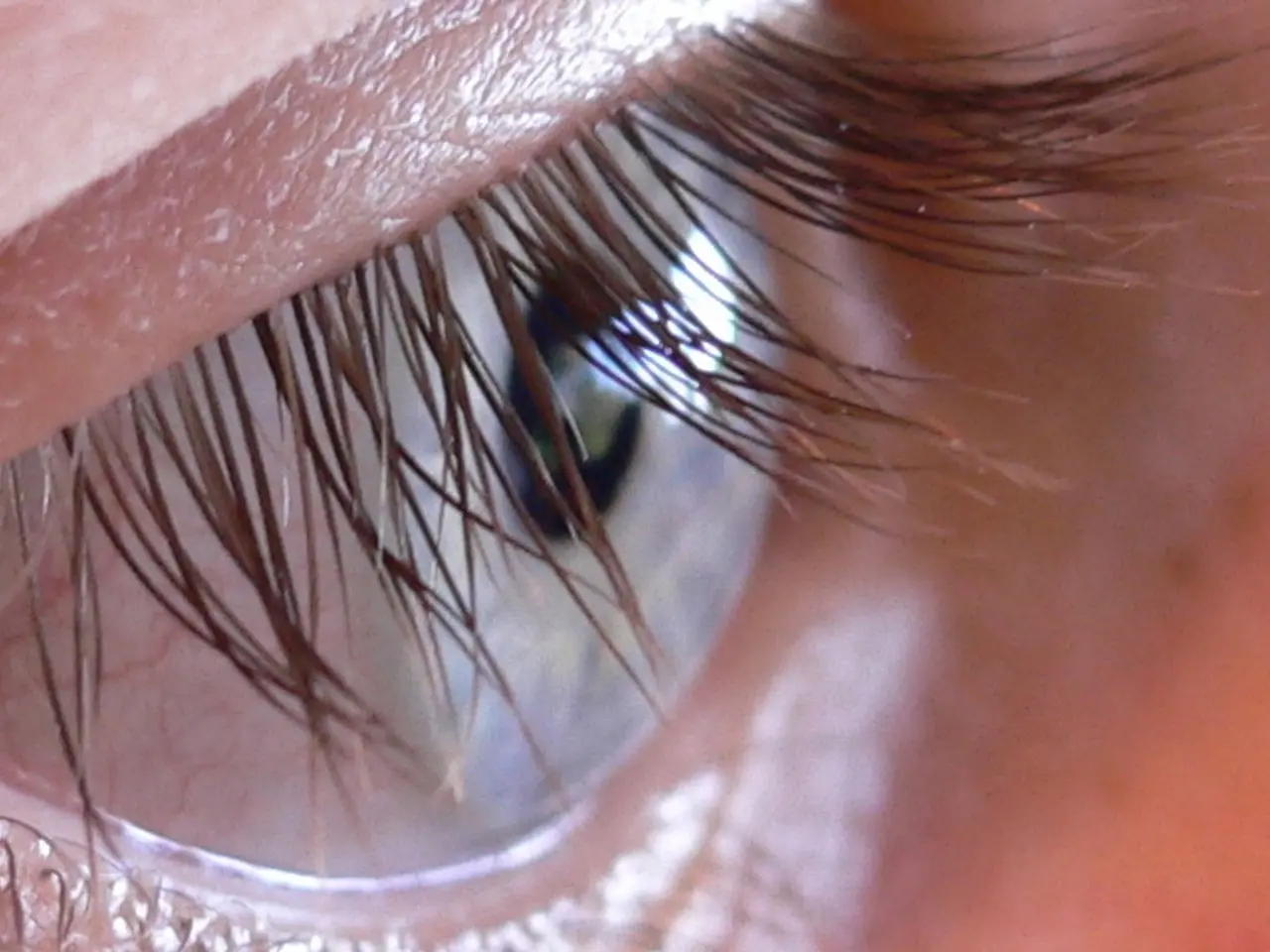Eye Vision Impairment in One Eye: Origin, Remedies, and Proper Actions to Take
In the realm of unexpected visual disturbances, blurry vision in one eye can be a concerning symptom. While it might be caused by common issues such as refractive errors, there are several potentially serious conditions that warrant prompt medical evaluation.
Refractive Errors
Refractive errors, including nearsightedness, farsightedness, astigmatism, and presbyopia, are common vision problems that can cause blurred vision. Symptoms may also include difficulty seeing objects up close, double vision, and seeing halos around bright lights.
Cataracts
Cataracts, another common cause of blurry vision, occur when the lens of the eye clouds over. This condition can lead to hazy vision, less colorful vision, difficulty seeing at night, and seeing a halo around lights. The only treatment for cataracts is surgery, during which a surgeon will replace the clouded lens with an artificial one.
Age-Related Macular Degeneration (AMD)
While AMD affects the macula, causing a loss of sharp or central vision, it is not typically associated with blurry vision in one eye. However, it's essential to note that AMD is a leading cause of vision loss in older adults, and early detection and management can significantly slow its progression.
Serious Conditions Requiring Immediate Attention
Sudden or persistent blurry vision in one eye may be a sign of emergent conditions such as retinal detachment, stroke, acute glaucoma, diabetic retinopathy, or serious eye infections. It is crucial to seek immediate medical attention, especially if accompanied by pain, eye redness, headache, neurological symptoms, or a history of trauma.
- Retinal Detachment: Sudden blurry vision or loss of vision may indicate retinal detachment, a critical emergency threatening permanent vision loss.
- Stroke or Transient Ischemic Attack (TIA): Sudden blurry vision can signal a stroke or mini-stroke affecting visual pathways.
- Acute Glaucoma: A rapid increase in intraocular pressure can cause eye pain, headache, nausea, and blurry vision, requiring immediate treatment to prevent permanent damage.
- Diabetic Retinopathy: In people with diabetes, blood vessel damage in the retina can cause sudden or progressive vision loss, sometimes with bleeding inside the eye.
- Eye Infections or Inflammation: Blurry vision with redness, pain, or light sensitivity may indicate serious infections or inflammation needing urgent care.
- Eye Trauma: Any recent injury to the eye or head accompanied by blurry vision should prompt immediate evaluation.
- Migraines with Visual Aura: Ocular migraines can cause temporary blurred vision, usually accompanied by headache, but are less likely to cause permanent harm.
Diabetes and Eye Health
People with diabetes are at an increased risk of vision problems. It is important for them to get annual dilated eye exams to detect early signs of damage, such as diabetic retinopathy, diabetic macular edema, cataracts, and glaucoma.
COVID-19 and Eye Health
Some people with COVID-19 experience conjunctivitis, which can cause blurry vision, red or watery eyes, and a sensation that a foreign object is in the eye.
Conjunctivitis (Pinkeye)
Conjunctivitis, a common type of eye infection, can cause symptoms such as red or bloodshot eyes, itchiness, swelling, discharge or crust around the eyes, vision problems, and blurry vision.
In conclusion, blurry vision in one eye can be a sign of various conditions, ranging from common refractive errors to potentially serious emergencies. It is essential to seek medical attention promptly, especially when accompanied by other symptoms, to ensure proper diagnosis and treatment. For those concerned they may have COVID-19, free tests are available for home use, or tests can be purchased at pharmacies or online. Regular eye exams are particularly important for people with diabetes to detect early signs of damage.
- Refractive errors, such as nearsightedness, farsightedness, astigmatism, and presbyopia, can cause blurred vision.
- Symptoms of refractive errors may also include difficulty seeing objects up close, double vision, and seeing halos around bright lights.
- Cataracts occur when the lens of the eye clouds over and can lead to hazy vision, less colorful vision, difficulty seeing at night, and seeing a halo around lights.
- The only treatment for cataracts is surgery, during which a surgeon will replace the clouded lens with an artificial one.
- Age-Related Macular Degeneration (AMD) affects the macula, causing a loss of sharp or central vision but is not typically associated with blurry vision in one eye.
- Retinal detachment can cause sudden blurry vision or loss of vision and is a critical emergency threatening permanent vision loss.
- Stroke or mini-stroke affecting visual pathways can cause sudden blurry vision.
- A rapid increase in intraocular pressure can cause eye pain, headache, nausea, and blurry vision, requiring immediate treatment to prevent permanent damage.
- In people with diabetes, blood vessel damage in the retina can cause sudden or progressive vision loss, sometimes with bleeding inside the eye.
- Blurry vision with redness, pain, or light sensitivity may indicate serious infections or inflammation and needs urgent care.
- Any recent injury to the eye or head accompanied by blurry vision should prompt immediate evaluation.
- Ocular migraines can cause temporary blurred vision, usually accompanied by headache.
- People with diabetes are at an increased risk of vision problems and should get annual dilated eye exams to detect early signs of damage.
- Some people with COVID-19 experience conjunctivitis, which can cause blurry vision, red or watery eyes, and a sensation that a foreign object is in the eye.
- Regular eye exams are particularly important for people with diabetes to detect early signs of damage.
- For those concerned they may have COVID-19, free tests are available for home use, or tests can be purchased at pharmacies or online.




